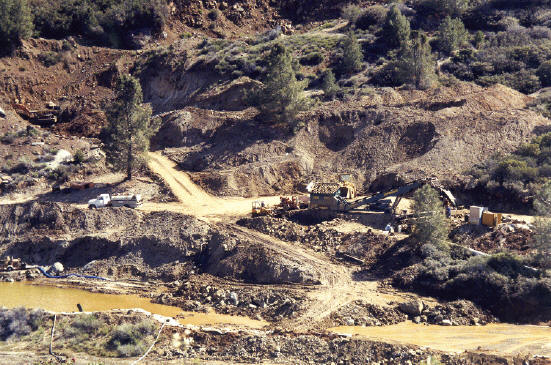
System for washing and sorting gem crystals from dumps. Collector’s Edge photo.
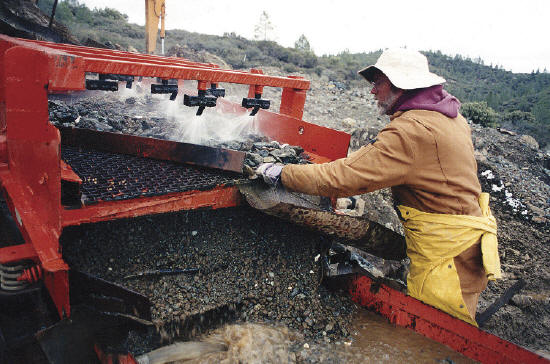
Buzz Gray operating the washer to remove mud. M. Gray photo.
Benitoite is very strongly dichroicsuch that when placed in the properorientation it looks either colorless, blue,or rich violet-blue in color. Benitoite hasa high birefringence, higher than that of diamond. Hence, cut stones come alivewith fire from refracted light. The bluecolor of benitoite is not affected by anytreatment such as heat or irradiation, althoughthe colorless sections of a benitoitecrystal have been changed toorange when heated (Bill Forrest personalcommunication 2002).
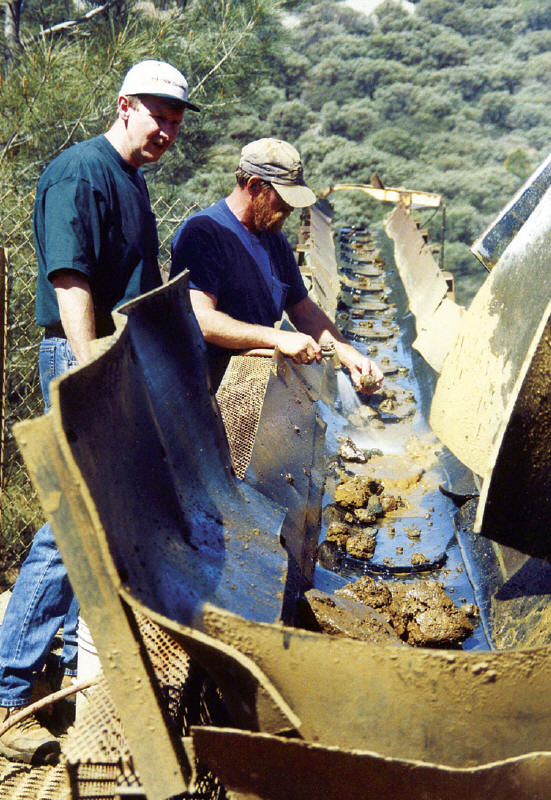
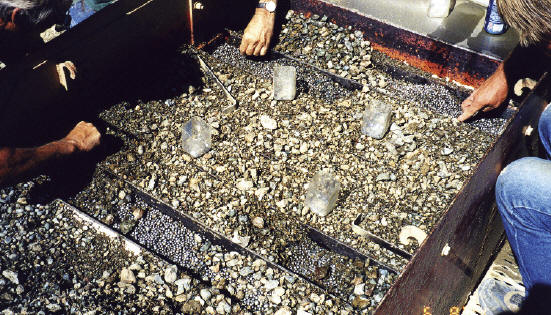


Bryan Lees watching for specimens and gem rough on conveyor belt. Next step was hand sorting gem crystals and fragments after washing. Last photo shows freshly collectedgem rystals. Collector’s Edge photos.
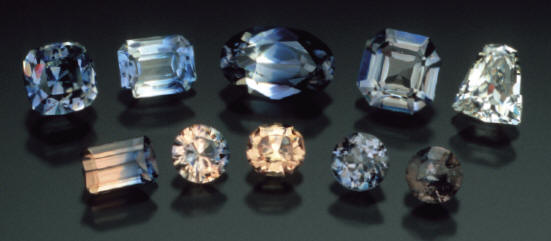
Benitoite gemstones (to 1.66 cts) showing different colors. B. Gray coll. J. Scovil photo.
Benitoite gemstones up to 1.43 cts. Collector’s Edge specimens. Benitoite gemstones (to 1.66 cts) showing different colors. B. Gray coll. J. Scovil photo. J. Scovil photo.
Benitoite is strongly reactive undershort wave ultraviolet light radiation.
It fluoresces a very bright, opaque, skyblue color. The fluorescence appearsto be stronger in crystals with crossiteinclusions than crystals of gem quality.
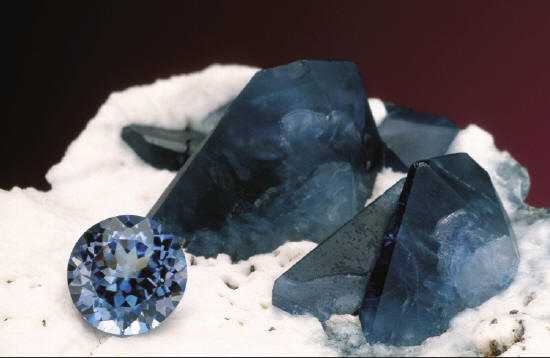
Benitoite crystals with 1.43 ct gemstone. Collector’s Edge specimens. J. Scovil photo.
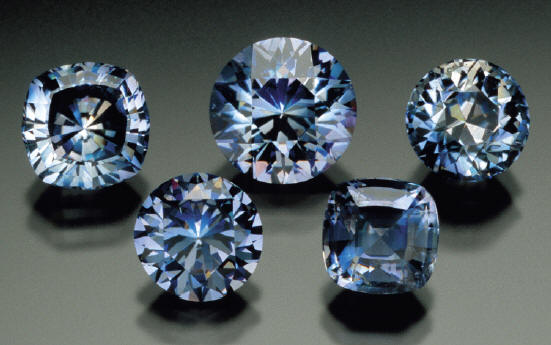
Benitoite gemstones up to 5.53 cts. B. Gray specimen. J. Scovil photo.
Some crystals fluoresce a dull reddishorange color under long wave ultravioletlight. The strong reaction undershort wave UV light is a very usefulexploration tool for locating specimens at the mine, and for prospecting. The naturalfluorescence is also important as itadds to brilliance of finished gemstonesin sunlight.

Benitoite crystal with gemstones. Collector’sEdge specimens. Van Pelt photo.
The primary use of benitoite isas specimens for mineral collectors anduse as an ornamental gemstone. Thoughnot well suited for use in rings due to itshardness of only 6.5, it is dazzling in pendants,earrings and necklaces. The vastmajority of finished gems are under0.5 carat weight. Gems over 1 carat arerare and gems over 2 carats are consideredvery rare.

Gemmy benitoite crystal 8 mm wide. AM Mizunaka specimen and photo.
The largest known pieceof rough recovered was a 34 caratpiece found by the current owner DaveSchreiner shortly after he acquiredthe mine from The Collector’s Edge, Inc.
It produced a finished stone of over8 carats and several smaller stones.
The largest known faceted benitoiteis owned by Mike Scott and is a 15.42 ctstone. The prices of finished gemstoneshave skyrocketed in recent years. Asa gemstone, benitoite is orders of magnitudescarcer than diamonds, emeraldsor rubies. High quality finished stones of one carat with good clarity and colorwill command prices of $3,000 or more.
Stones of two carats can bring $8,000-$10,000. Values should continue toappreciate in the future as supply islimited and additional commercial productionis not feasible.
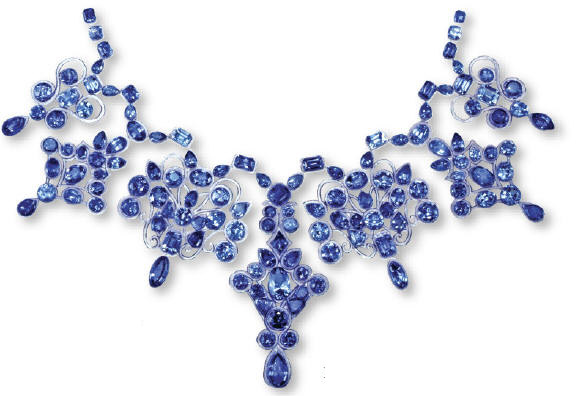
Custom benitoite necklace made with 133 gemstones, the largest of which weighs 3.5 ct. Ed Swoboda collection. Photo courtesy of Ed Swoboda.
It is hard torank the finestspecimens but twospecimens in the LACounty Museum are considered tobe among the best – a large 3 cmtriply terminated crystal and afabulous ring of adjoined benitoitecrystals. A smaller specimen in theauthor’s personal collection is consideredone of the finest with the threespecies – benitoite, neptunite and joaquinitearranged in an aesthetic position. Itwas dubbed the “Sushi Plate” by BryanLees of Collector’s Edge.
Most new minerals discovered inthe last 100 years have been as a resultof some unusual diffraction patternin an X-Ray analysis or as some microscopiccrystals that could only beappreciated under a scanning electron microscope. Benitoite caused an immediatesensation with its large wellformedcrystals accompanied by equallystriking crystals of neptunite and joaquinite.
There have been few occasionsin the history of mineraldiscoveries where a new specieswas found withsuch magnificentcrystals.

Stibiotantalite pendant with benitoites, 4.5 cm high. B. Gray coll. J. Scovil photo
















 YueGongAnBei 44051102000467
YueGongAnBei 44051102000467


 |
|